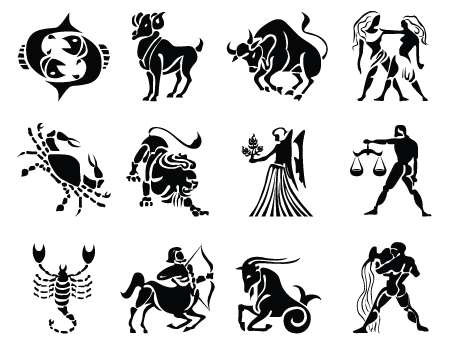Grendel, a novel by John Gardner telling the story of the epic “Beowulf”’s monster Grendel, references each of the twelve zodiac signs in each of its twelve chapters, with meanings that allude to specific philosophies. These philosophical matters add to the already psychologic entities of Grendel. For instance, readers are made to grasp a deep understanding of Grendel’s feelings and thoughts in order to make sense of the plot of the novel. Gardner’s choice to make allusions to astrology and philosophy make the statements he was trying to make clear in Grendel more obvious by dropping clues and allowing readers to draw parallels.
Chapter one is set in the month of April, for which the zodiac sign is Aries. Here, in a flashback to his childhood, Grendel is merely beginning to develop his philosophies and views on the world around him. Chapter two represents the astrological sign of Taurus, the bull. In this chapter, Grendel finds himself stuck in a tree after being charged by a bull. After calling for help, and receiving none, Grendel, feeling alone, adopts the philosophy of solipsism; he declares that “[He] exist; nothing more.” Chapter 3 is centered around Gemini, the zodiac sign of the twins. In this chapter, Grendel encounters the Shaper, whose words are quite influential and give Grendel a sharp desire to mimic his actions. Chapter four sets the scene for the zodiac sign of Cancer, the crab. Here, the novel relates philosophically to the Old Testament of the Bible, and makes known the fact that Grendel is thought to be a descendent of the murderous Cain. In chapter five, readers see the use of connections to the astrological sign of Leo, the lion. The philosophy discussed in this chapter surrounds the idea that all things are fundamentally connected; things are a process. The sign of Virgo, the virgin is alluded to in chapter six. In this chapter, Grendel begins to recognize the fact that he is not all that exists. Further, he declares nearly everyone else his enemy. Chapter 7 alludes to Libra (typically symbolized by balanced scales), and there readers see the emergence of Wealtheow. Wealtheow, Hrothgar’s sister, is portrayed as the balance of community who keeps peace and exposes Grendel to Christian ideals. Scorpio, the scorpion is alluded to in chapter eight. Hrothulf, Hrothgar’s orphaned nephew is taken in and given a mentor, Red Horse, who despises political standards. The ideals that government is corrupt align with what is called Machiavellian philosophy, which regards manipulative action. Grendel’s chapter nine surrounds the sign of Sagittarius, the archer. Here, readers come to see the hierocracy of Ork, an elderly priest. Chapter ten alludes to Capricorn, the goat. This chapter recognizes the philosophy of nihilism, which is the belief that because of a lack of care, all might as well be destroyed. Aquarius, the water-bearer is the zodiac sign that chapter eleven centers. The idea that humans are isolated in a world of accident becomes prominent here. With this, there is the belief that men create their own values, but the values have no meaning beyond those which the humans implemented them for. The final chapter, twelve, includes symbolism relating to Pisces, the fish. In this chapter, Grendel ultimately becomes a nihilist, and in some respects, loses faith.
After enduring all of the philosophical changes mentioned above, Grendel discovers a philosophy on his own. Previously, he had been swayed by other characters and events. In the end, however, he develops his own view, one of nihilism. It appears as if the negative events in his life lead him to a philosophy of pessimism; he feels the world and his death as well are accidents.


No comments:
Post a Comment